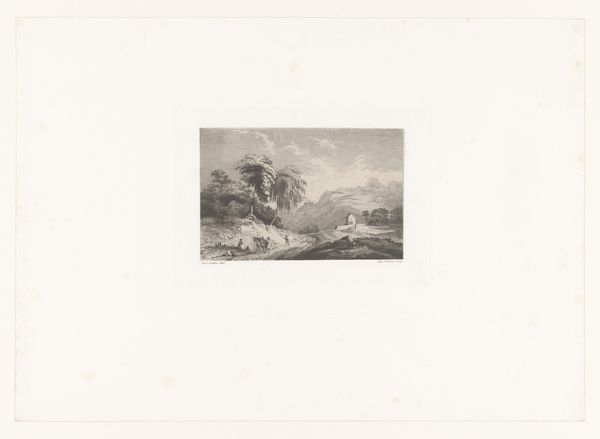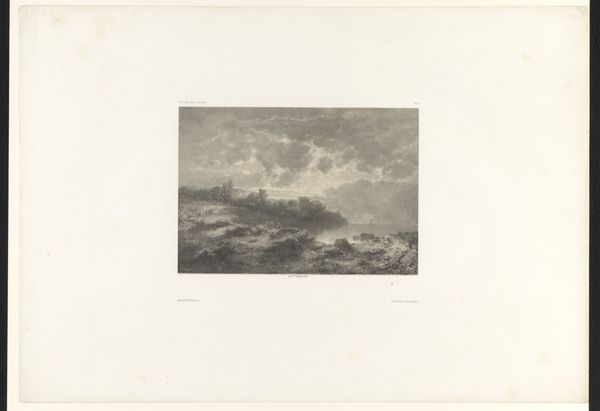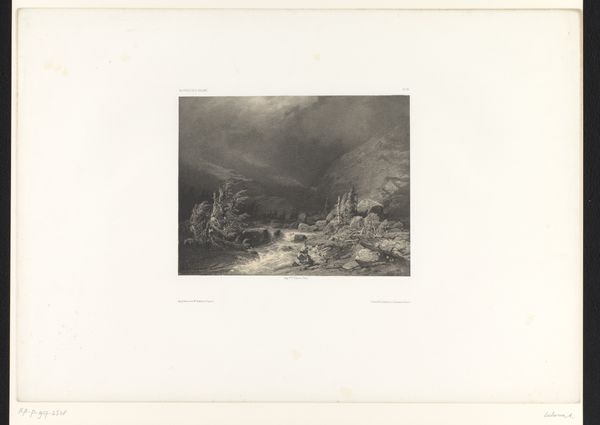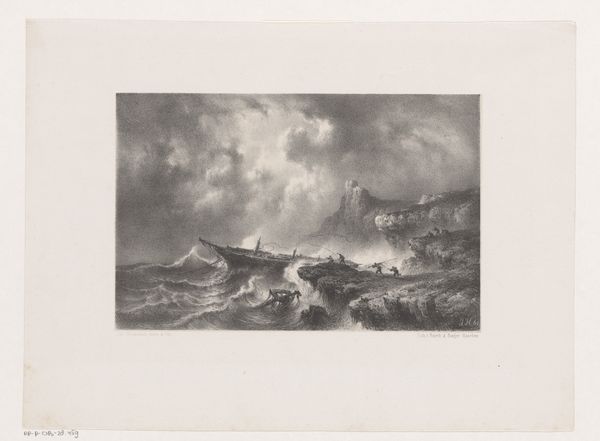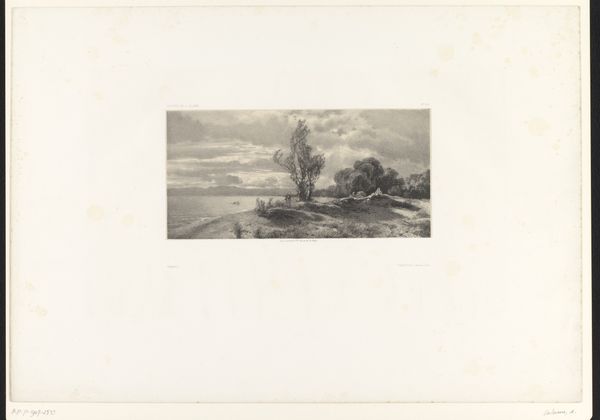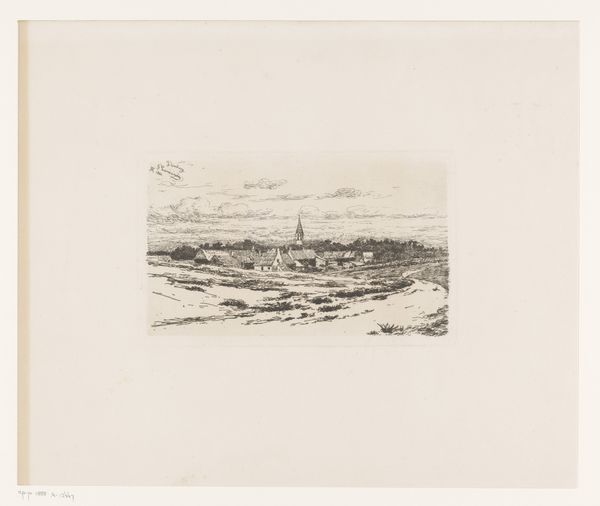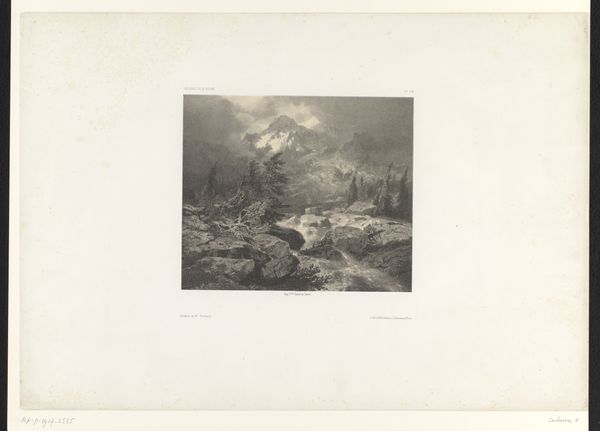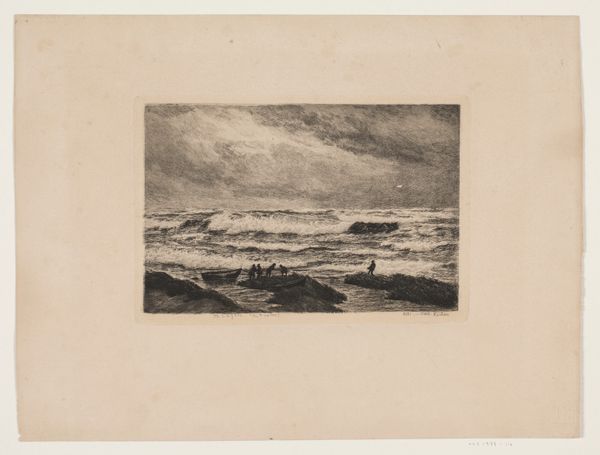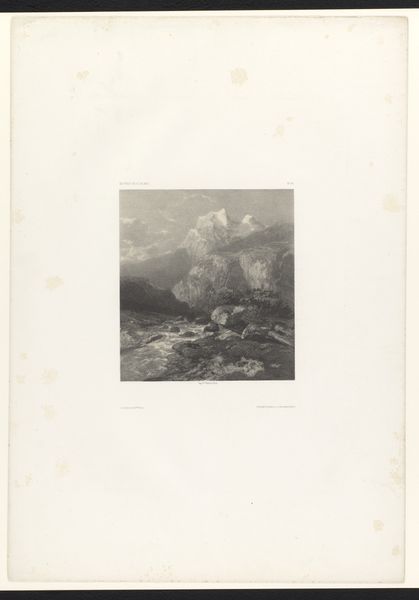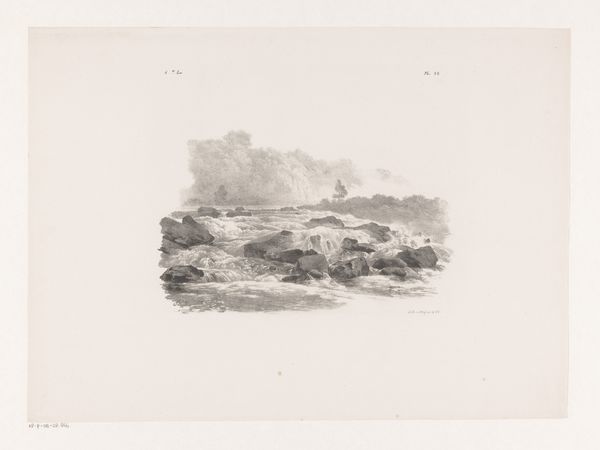
Dimensions: height 163 mm, width 210 mm
Copyright: Rijks Museum: Open Domain
Curator: I'm immediately struck by the sheer drama! This isn't just a storm at sea; it’s chaos rendered in monochrome. I feel like I can almost taste the salt spray. Editor: Quite right. What we have here is "Seascape with Shipwreck," an engraving dating roughly between 1850 and 1880 by Emile Frédéric Salmon. It’s a potent example of Romanticism's fascination with nature’s power over humankind. Curator: It's the composition that gets me. The churning waves dominate everything, swallowing the ships and those poor souls bobbing in what look like lifeboats. The sky is heavy with what you can almost describe as an apocalypse unfolding in grey tones. Editor: Indeed. Seascapes have long been potent symbols, often reflecting cultural anxieties or the transience of human existence. The broken ships speak to both human vulnerability and perhaps a sense of folly – the hubris of daring to challenge such a force. Curator: Are there classical sources for that reading, do you think? Because my gut feeling here is slightly different – almost less judgmental and more like a kind of acceptance. The artist doesn't feel like he’s lecturing anyone, only observing. Editor: Well, consider the period. There was an intense interest in dramatic natural events – think of the vogue for mountain paintings and sublime landscapes. It suggests the viewer can witness the shipwreck and draw a moral, reflecting on their place in the grand scheme. But yes, the lack of an obvious "hero" does nudge it toward observation. Curator: And the detail, for an engraving! Those waves are alive, practically three-dimensional, and they convey the danger so compellingly. It has an undeniably narrative quality. One can’t help imagining the stories behind those tiny figures lost in the vastness. Editor: Absolutely. And that narrative invites us to contemplate the psychology of survival and despair, mirrored in our relationship with forces much greater than ourselves. Curator: Thinking about that now, the piece carries even more weight. Thanks, that has definitely enriched my understanding! Editor: My pleasure entirely. It's a bleak, evocative piece, and a stark reminder of the sea's indifferent power. A little bracing, perhaps, but good for the soul, all the same.
Comments
No comments
Be the first to comment and join the conversation on the ultimate creative platform.


